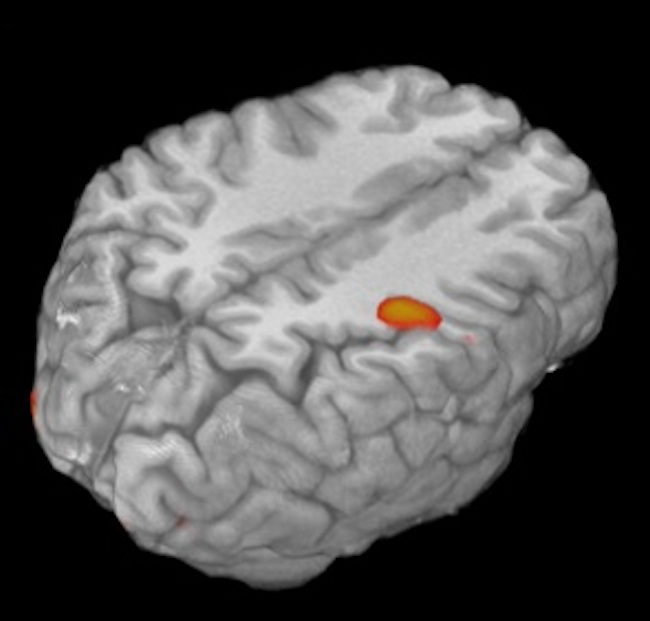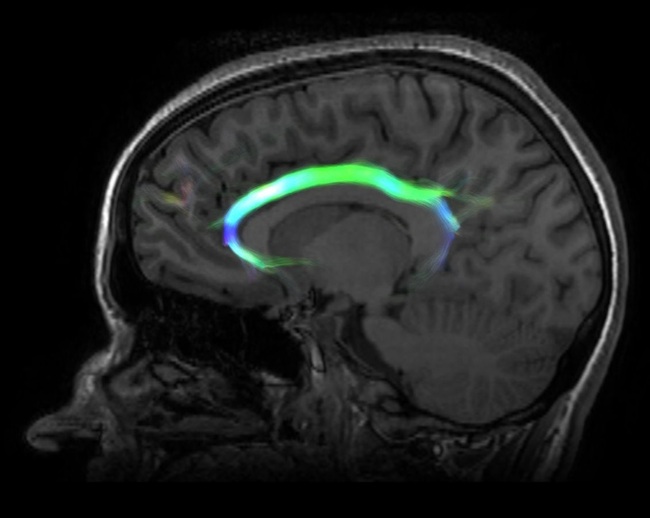The Canterbury Medical Research Foundation has worked with Christchurch Radiology Group to enable access to a General Electric 3 Tesla HDx MRI scanner.
The scanner is located in the same building as the New Zealand Brain Research Institute (NZBRI) at 66 Stewart Street, Christchurch.
The MRI facility is well equipped for imaging all parts of the body, but our specific research focus at NZBRI is on brain imaging.
Research interest welcome
We are happy to help facilitate access to MRI scanning for researchers who are interested. At the NZBRI, we can provide technical support including establishing scanning protocols, help with general imaging troubleshooting, and advice on image processing and image analysis. Our goal is to promote groundbreaking research to further our understanding of the brain by establishing NZBRI as a centre of excellence in neurological imaging research.
Contact Tracy Melzer, MRI Research Manager
Email tracy.melzer@otago.ac.nz
NZBRI researchers work closely with neurologists, radiologists and basic scientists in this extremely cross-disciplinary area. We also have a research agreement to work with General Electric Healthcare to further develop MRI technology for clinical and research applications worldwide.
Advanced MRI techniques
The larger magnetic field of this 3T scanner over the current generation of 1.5T scanners provides increased signal to noise ratio, increased spatial resolution, and faster acquisitions.

All four of these images were acquired in a single imaging session.
One of the many benefits of MRI is that within a single imaging session, multiple types of images can be acquired. These different images are able to convey information about both structure and function. In the example above all four of these images were acquired in a single imaging session.
- Far left is a high resolution structural scan (T1-weighted) clearly displaying anatomy and can be useful in identifying atrophy
- Second from the left is derived from diffusion MRI and displays the white matter tracks in the brain. Here, colour indicates the direction in which the fibre is traveling. Red indicates fibres traveling in the left-right direction; green, traveling in the anterior-posterior direction; and blue, inferior-superior
- Third from left is a perfusion image displaying cerebral blood flow where red indicates high flow and blue indicates low flow
- At the right is a type of scan (T2 FLAIR) used to provide clinical information
Structural MRI
Structural MRI (3D T1-weighted images) produces high resolution, anatomical images of the brain. This type of imaging provides exquisite information on structural anatomy of the brain and can be used to assess atrophy (or loss of brain tissue). It plays another important role as it is used in the analyses of other advanced MRI techniques.
T2-weighted images are the work horse of clinical imaging, providing information on tissue health. The T2-weighted PROPELLER acquisition technique is substantially less sensitive to patient motion than conventional imaging, and so is particularly useful for imaging young children, patients with movement disorders or anxiety.

3D representation of a brain.
Functional MRI
Functional MRI represents a significant change from conventional structural imaging in that it provides information about dynamic changes in the brain as a result of mental processes. It benefits twice from the higher magnetic fields; both the MRI signal itself, and the amount of contrast, are increased.
Resting state functional connectivity MRI is a relatively new method for evaluating regional interactions in the brain while a person is 'at rest', i.e. not performing any explicit task. This technique can be used to identify brain networks, which consist of spatially distributed but functionally linked regions that continuously share information with each other. The integrity of the functional connections within a network can then be explored in relation to disease or other areas of brain function.

This image shows the results of a functional MRI experiment (fMRI). Areas of red-orange indicate areas of the brain that are active during finger tapping.
Diffusion tensor MRI
We have particular interest and expertise in diffusion tensor MRI. This is an application of MRI that is extremely sensitive to microstructural changes in the brain. It is also the only non-invasive technique that allows us to map out connections (white matter tracts) in the living brain.
This non-invasive technique, based on the movement of water in the brain, has several major applications:
- Quantitative assessment of microstructural brain damage
- Non-invasive determination of brain connectivity

Diffusion MRI can be used to map out white matter fibres in the brain. A very important white matter track, the cingulum bundle, runs from the front of the brain to the back of the brain. This is displayed here in green. Measures along this tract can inform us as to the microstructural integrity of this, as well as other, important connections throughout the brain.
Arterial Spin Labelling blood flow imaging
Arterial Spin Labelling (ASL) is a novel, non-invasive MRI technique used to quantitatively measure blood flow in the brain. Blood flow imaging is particularly helpful in determining malignancy of tumours and has been implemented in neurodegenerative diseases.
MagLink MRI-compatible EEG system
This allows a challenging but extremely powerful combination of imaging technology that overcomes many of the limitations of the individual techniques.
While functional MRI provides excellent spatial resolution, its contrast is based on blood flow responses that occur relative slowly (over several seconds). EEG provides extremely high temporal (time) resolution, but with poor spatial resolution. Richard Jones leads this research area.
New Zealand Brain Research Institute

Dr Tracy Melzer, MRI Research Manager.
"I oversee all imaging at the NZBRI. This provides me with the opportunity to become involved in a wide range of neurological research, including child development, mild traumatic brain injury, post-traumatic stress disorder, neurodegenerative diseases, and more.
"As a research fellow in the Department of Medicine, my primary focus is on the development and application of MRI techniques to advance our understanding of cognitive decline in Parkinson's disease."
Read more about Tracy's journey into brain imaging:
Health Sciences Postdoctoral Fellowship Profile: Dr Tracy Melzer
MRI brain image

Maximum intensity projection of a multislab 3D time-of-flight dataset, showing excellent delineation of the Circle of Willis and other cerebral arteries. Note that this data is acquired without the use of injected contrast agents, and uses blood flow as an intrinsic contrast mechanism. The use of 3T MRI further enhances the suppression of unwanted (stationary) background signal.